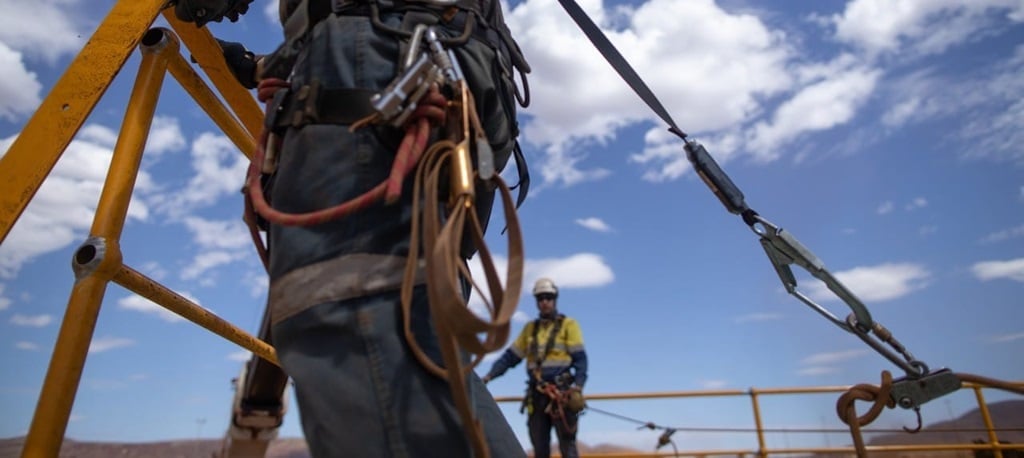Working at Height comes with significant risk for businesses. So, how can you ensure safety in Solar PV installations?
Here, Certas Energy‘s very own Robert Hunter – Head of Health, Safety, and Environment for the Renewable Energy division – dives into best practices and the application of working at height controls.
The Growing Solar PV Market in the UK
The UK’s solar PV market has seen significant growth in recent years, driven by the country’s commitment to renewable energy and reducing carbon emissions. This growth has led to an increase in the number of businesses involved in the installation of solar PV systems across these various sectors.
As the demand increases, so does the possibility of workers being put at risk while working at height. This increase can also come at the detriment of safety, as more businesses seek to enter the market. Price competition and lack of knowledge on the requirements for safe working at height can lead to workers being placed in unsafe conditions and situations.
At Certas Energy, we are focused on leading the industry and ensuring our teams are working as safely as possible on their projects. However, we don’t want only our workers to be as safe as they can, but the workers of all companies involved in the delivery of projects, where working at height is a serious risk.
The Risks of Working at Height
Working at height is an inherent part of solar PV installations. From installing the safe access and egress and edge protection for projects through to installing panels on the roof of a home, barn, or a commercial building. There is also the risk when working near excavations when installing or connecting to underground services, although less likely, this remains a hazard to be aware of on projects.
Our teams often find themselves working several meters above the ground. This presents a number of risks, including falls, which can lead to serious, life changing injuries or even fatalities. It is a fact, that in the UK for 2022/23 40 workers lost their life due to falling from height, and a further 4,937 workers suffered injuries due to falls from height.
Implementing Effective Controls
At Certas Energy, we take a positive and proactive approach to manage these risks. We adhere to the Health and Safety Executive (HSE) guidelines for working at height, which recommend a hierarchy of controls and have designed our policies and procedures around these, which in turn translate into the safe design of our projects:
The Hierarchy
Avoidance: Where possible, we avoid working at height. This can be difficult when the project itself is required to take place on a roof, however through surveys and working with clients, if access and areas for installation can be achieved with no risks from falling from height these are always the preferred route.
Prevention: Where working at height cannot be avoided, we use measures to prevent falls. This includes the use of guardrails, scaffolding, toe boards and secure ladders as well as secure edge protection and sky light roof protection. We aim to avoid any working from harness and lanyards during the installation of PV panels and default to fully protected, safe working areas as standard practice. This also involves using the right type of equipment for the job, ensuring workers are competent, and following a safe system of work.
Mitigation: In the event that a fall does occur, or someone is otherwise injured when at height, we ensure that project specific rescue plans are in place to facilitate a safe and efficient recovery.
Working with Key Scaffolding Contractors
At Certas Energy, we understand the importance of collaboration in ensuring safety. We work closely with our key scaffolding contractors to agree on best practices and suitable designs for access and edge protection requirements on our projects. This collaboration allows us to ensure that the design of any scaffold structure complies with our safety standards, covers all statutory requirements, is safe to use, and fit for purpose. We also ensure that our scaffolding contractors are competent and that their work is supervised by competent persons ensuring their safety when working at height on our projects.
Training & Competency, Awareness & Communications
Ensuring the competency of our workforce is a key critical aspect of our safety strategy. All our employees undergo rigorous training in working at height safety, which includes both theoretical knowledge and practical skills, rescue training and the proper use of working at height and other ancillary equipment. The working at height safety training provision in the UK is amongst the best in the world and has been serving high risk industries for many years. Leveraging on the experience of these bodies helps to ensure our workforce have the best available training and can be sure of their competency when working at height and on rooftops.
We believe that communication and awareness is key to maintaining a safe working environment. We use various means to maintain our teams’ awareness of the risks, which they encounter every day. We recently held a safety stand down to cover working at height risks and our updated policies and procedures. This commitment has been further reinforced through the DDC plc Safety Speak up events, which have been designed to ensure everyone knows they have a voice to raise safety concerns on their projects.
No Falls Foundation
In line with our commitment to safety, we actively participate in initiatives such as the No Falls Foundation’s ‘No Falls Week’. This annual event aims to raise awareness about the importance of safe working at height and provides educational resources, real stories, and community engagement opportunities. It serves as a powerful reminder of why safe work at height is so important.
During No Falls Week and beyond, we use the Foundation’s resources to help reiterate the risks of working at height to our teams as well focusing safety conversations at site around working at height. No falls Week was a launch pad – adding to our ongoing awareness and communication strategy to help maintain a focus on working at height risks. We will be carrying out continued campaigns across this year and beyond, ensuring our communications to the teams regarding the critical safe working at height messages whilst actively encouraging a positive culture on this critical subject.
Human Factors in Working at Height
As part of our working at height policy and controls, it is important to remember that not all engineering and procedures allow for safe access and egress, edge protection and rescue plans. Human factor considerations are also key in ensuring an overall safe system of work is in place, tailored to the teams, and in reducing potential exposure to the risks. Ultimately it is people who will be working at height and could be injured, therefore taking account of them in the process is a critical step. To address these human factors effectively, we have implemented several key measures to ensure the well-being and safety of our teams:
• Ensuring our teams and contractors are physically and psychologically fit to work at height while accessing across sloping or fragile surface to avoid slips and trips is vital. Safety critical assessments will be carried out to mitigate the risk of poor health.
• Presenteeism is accountable for twice the amount of absenteeism. Presenteeism is a productivity issue that comes from workers coming to work, despite being physically, mentally, or emotionally unwell.
• We encourage anyone who may be experiencing symptoms in relation to poor mental or physical health to speak up and report this through their supervision and management. They can also access the Employee Assistance Programme (EAP).
• Taking the time before starting work each day to check on your teammates is part of the setting to work process, but it is also part of being a team and keeping those check ins going throughout the day.
Conclusion
Health and Safety is at the heart of everything we do at Certas Energy, and the risk from working at height is even greater as we expand our renewable division and increase the numbers of projects where our teams are actively installing rooftop solar. As we continue to contribute to the UK’s Energy Transition through our solar PV installations, we remain committed to ensuring the health and safety of our workforce by effectively applying working at height controls as well and seeking to engage with our clients, industry bodies and competitors to ensure the safe working at height standards are understood and are applied on all roof top PV projects.
TAKE CONTROL OF YOUR FLEETS FUEL
Ready to start fuelling your business' success?
Steamline your fleet operations, control costs, and experience the benefits of Certas Energy Fuel Cards. Get in touch to start saving today.




